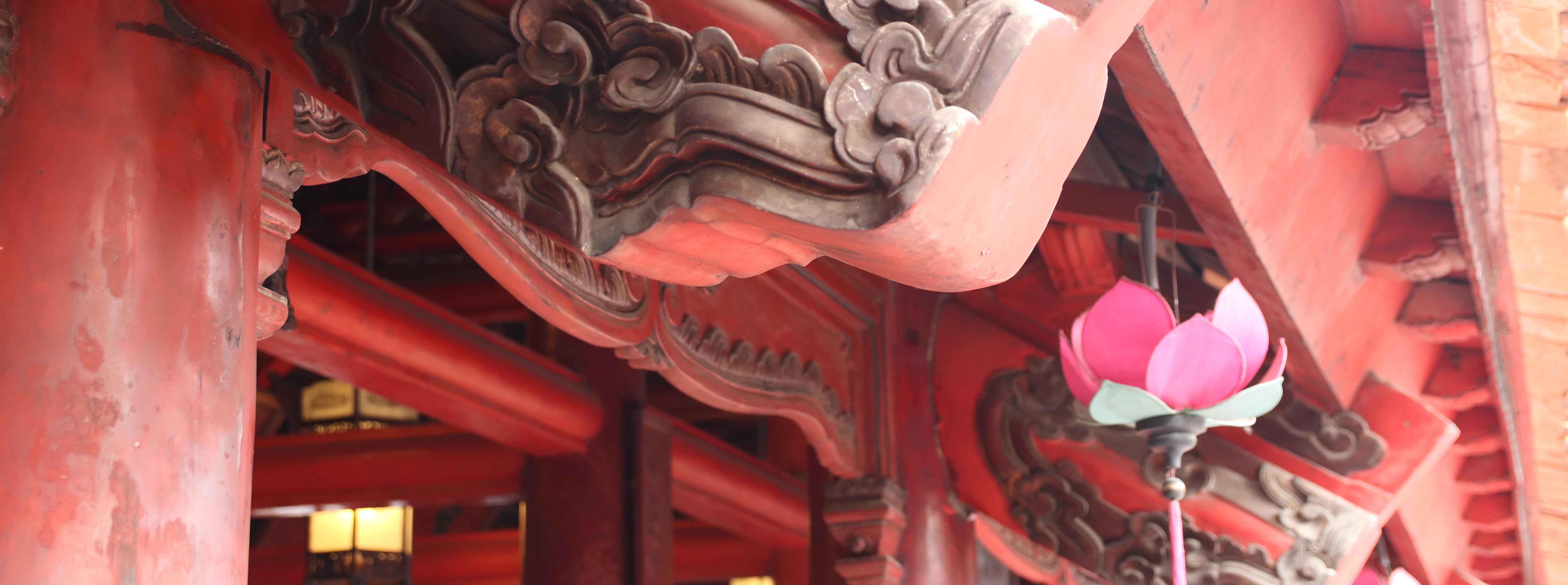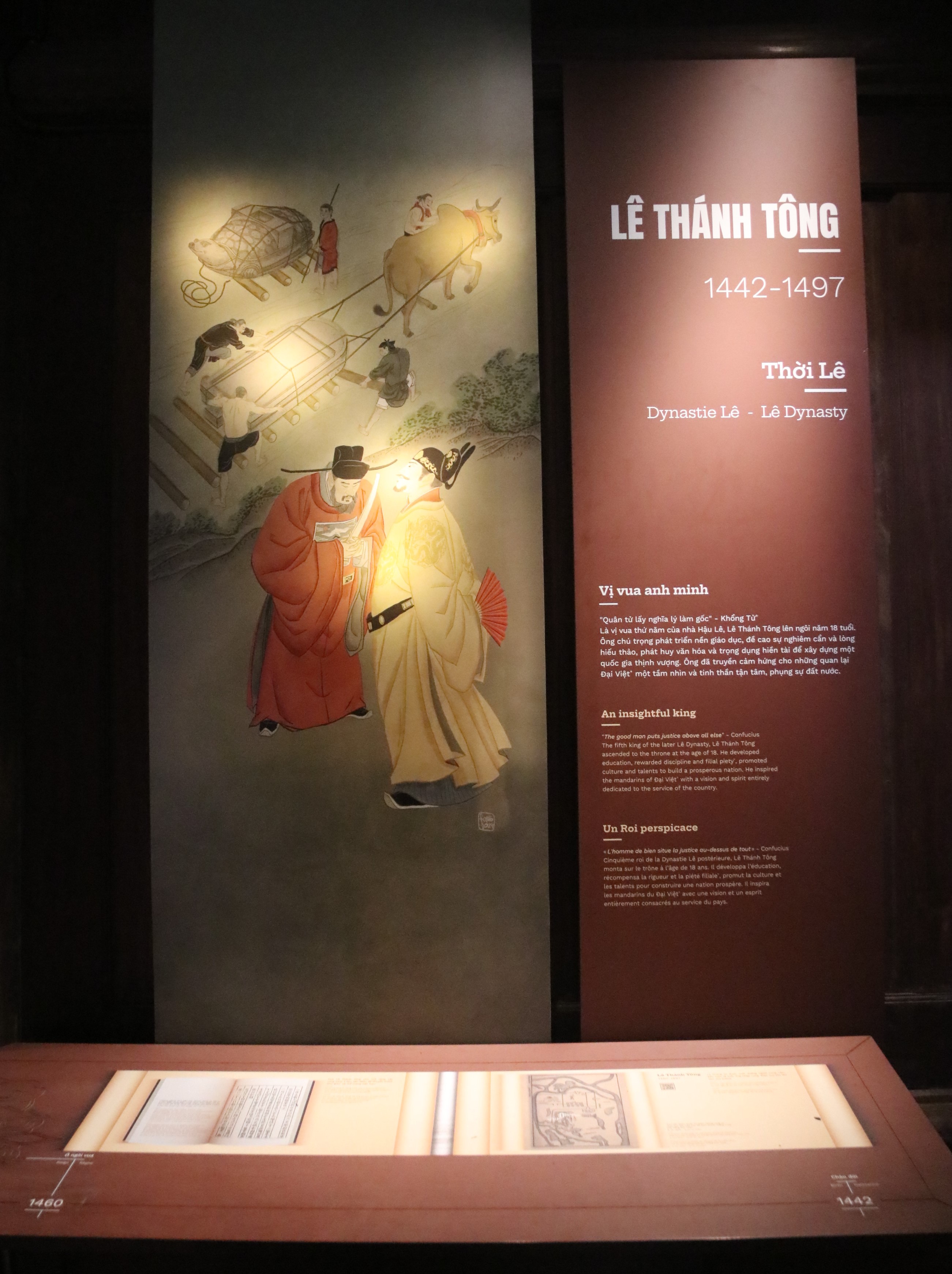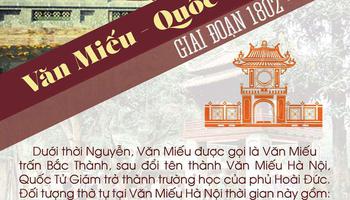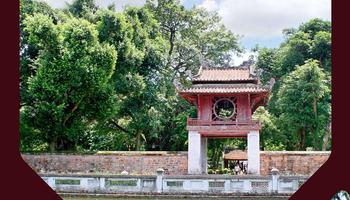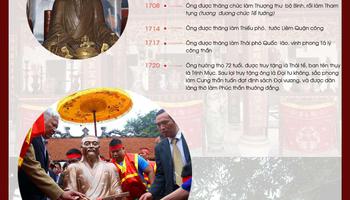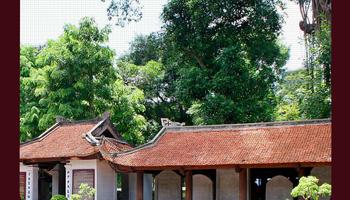KING LÊ THÁNH TÔNG THROUGH THE EXHIBITION “THE PROLEGOMENON TO THE TRADITION OF EDUCATION IN VIETNAM "
Lê Thánh Tông was a decisive and enlightened king, proficient in both literature and martial arts. Under his reign, the nation of Đại Việt achieved remarkable development in all aspects, especially in culture and education. In 1484, King Lê Thánh Tông initiated the erection of doctoral steles at Văn Miếu – Quốc Tử Giám to honor accomplished Confucian scholars, promote learning, affirm the role and value of talent, instruct scholars on moral responsibilities, and encourage virtuous deeds while preventing evil actions.
Through artifacts and historical documents, the exhibition on “The Prolegomenon To The Tradition Of Education In Vietnam " depicted the lives and careers of distinguished figures, including King Lê Thánh Tông - a brilliant military strategist and the most outstanding monarch of his time in Vietnam.
King Lê Thánh Tông (1442-1497), born as Tư Thành and posthumously known as Húy Hạo, was the fourth son of King Lê Thái Tông. Raised in Huy Văn Pagoda near Văn Miếu, he ascended to the throne at the age of 18 in 1460, being hailed by courtiers. Described in the Đại Việt sử ký toàn thư (Complete Annals of Đại Việt) as possessing exceptional intellect, extraordinary appearance, noble demeanor, benevolence, dignity, and intelligence fitting for a monarch, Lê Thánh Tông was deemed capable of ruling the country and defending it.
The meticulously arranged historical timeline displayed in the exhibition hall provided insights into King Lê Thánh Tông's educational policies, which were systematic and rigorous. In 1462, he established the Huong (regional) and Hoi (National) examinations to be held every three years, alternating between them annually. These exams, overseen by the king himself, often focused on governance principles of past monarchs. The organization of these exams was meticulous and serious, aiming to attract scholars from all regions. Additionally, he regularly held Đình (Royal) examinations to select officials and educational administrators for local schools in 1466 and 1473.
The exhibition also highlighted King Lê Thánh Tông's role as a reformer and adept social organizer with far-reaching vision. In 1483, he reformed the administrative apparatus and promulgated the Hồng Đức Legal Code comprising 722 progressive laws, laying the groundwork for national stability and development. He emphasized filial piety among officials and combated corruption and laziness. The king prioritized territorial integrity and border stability, issuing a comprehensive map showing the 13 provinces and one central prefecture in 1490. He also commissioned the historian Ngô Sĩ Liên to compile the "Complete Annals of Đại Việt" in 1479.
With vivid images interwoven with concise informational panels, the exhibition on King Lê Thánh Tông captivated viewers, especially the youth. QR codes strategically placed alongside the information encouraged curiosity and exploration among young visitors. By scanning these QR codes with smartphones, visitors could uncover hidden information.
These QR code insights provided deeper understanding of the examinations conducted during King Lê Thánh Tông's reign, as well as details of the ceremonies for conferring academic robes, banquet feasts, and ceremonial appointments for successful doctoral candidates. These details reflected a flourishing educational system under this talented monarch's rule.
In conclusion, the exhibition on King Lê Thánh Tông in the The Prolegomenon To The Tradition Of Education In Vietnam " showcased the authentic portrait of a wise and illustrious king of the Vietnamese people. The reign of King Lê Thánh Tông achieved significant cultural and educational advancements, with a particular emphasis on education as the cornerstone for building and developing the nation.
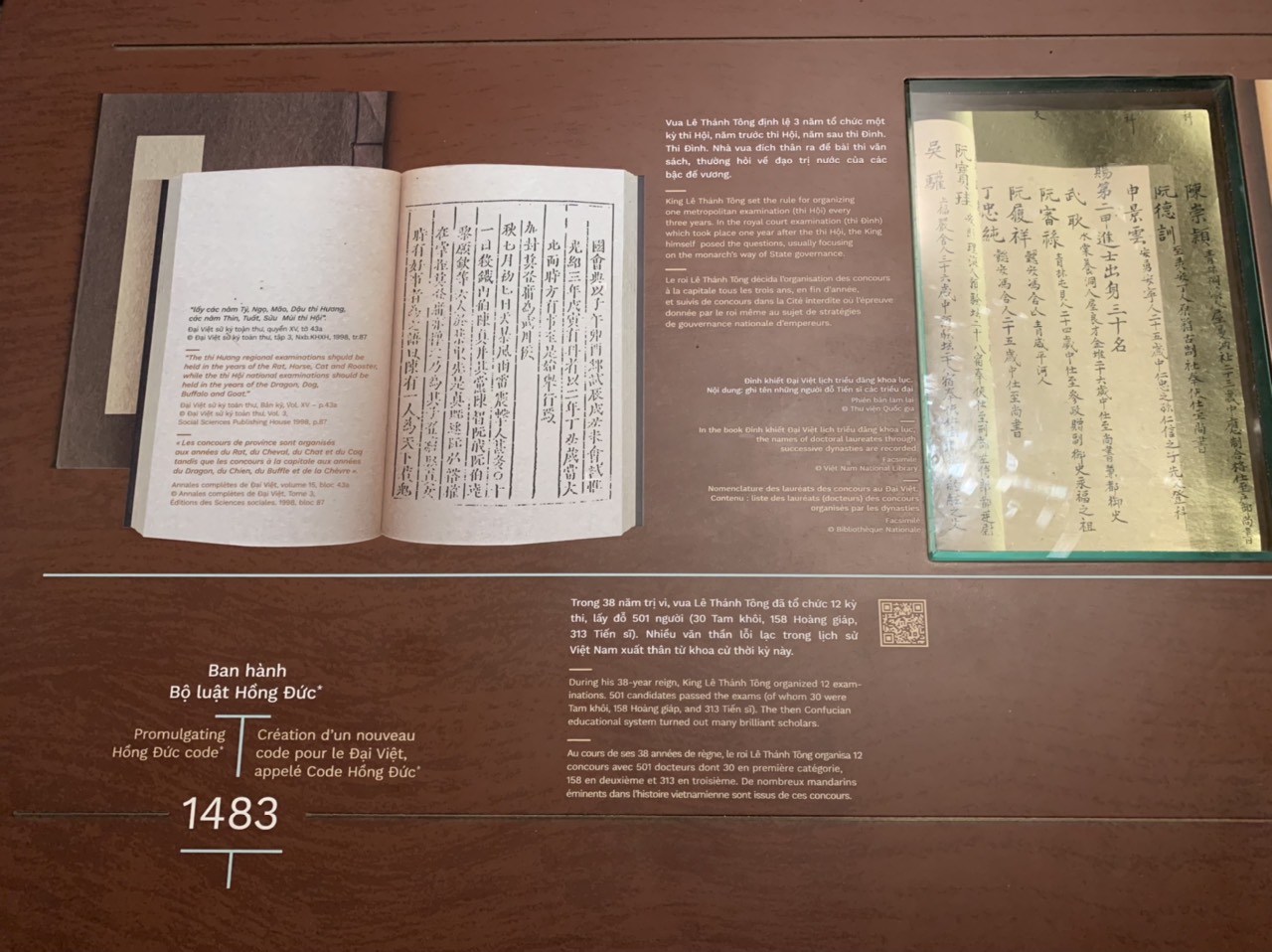
NL
TL: LH
